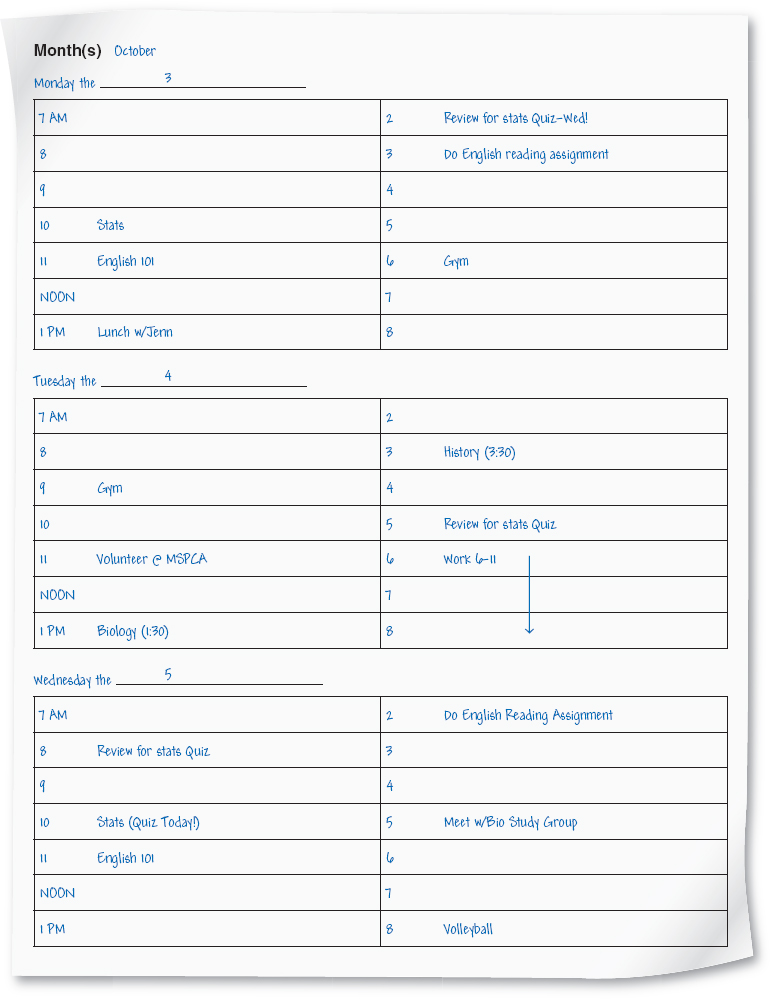If you live on campus, you might want to create a schedule that situates you near a dining hall at mealtimes or allows you to spend breaks between classes at the library. Or you might need breaks in your schedule for relaxation, catching up with friends, or spending time in a student lounge, college union, or campus center. You might want to avoid returning to your residence hall room to take a nap between classes if the result is you feel lethargic or oversleep and miss later classes. Also, if you attend a large university, be sure that you allow adequate time to get from one class to another.
If you’re a commuter student or if you must carry a heavy workload to afford going to school, you might prefer to schedule your classes in blocks without breaks. However, while taking back-to-back classes allows you to cut travel time by attending school one or two days a week and might provide for more flexible scheduling of a job or family commitments, it can also have significant drawbacks.
32
33
YOUR TURN
Knowing what you know now about your schedule, what will you do differently next term? Will you try to schedule classes close together or spread them apart? Why?
When all your classes are scheduled in a block of time, you run several risks. If you become ill on a class day, you could fall behind in all of your classes. You might also become fatigued from sitting in class after class. When one class immediately follows another, it will be difficult for you to have a last-minute study period immediately before a test because you will be attending another class and are likely to have no more than a 15-minute break. Finally, remember that for back-to-back classes, several exams might be held on the same day. Scheduling classes in blocks might work better if you have the option of attending lectures at alternative times in case you are absent, if you alternate classes with free periods, and if you seek out instructors who are flexible with due dates for assignments.
